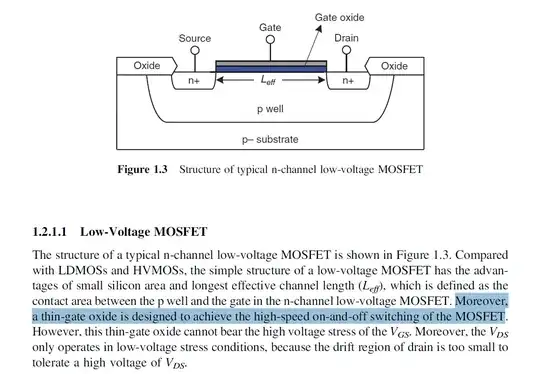You are right that the gate capacitance is an important factor of transistor "speed". However, there are other effects that can change it.
A thinner oxide will typically reduce the threshold voltage, which will cause a higher current for the same input voltage, or in other words: the output resistance \$R_{ds}\$ of the transistor will decrease. The switching speed of logic is approximately proportional to the \$R_{ds}C_{gate}\$ time constant, meaning that reducing \$R_{ds}\$ might indeed make it faster.
I took a look at the paper that jonk referenced in the comments, and the conclusion of it is that changing the oxide thickness can affect the switch time in both ways (positively or negatively) - there is an optimum. For larger thickness, \$R_{ds}\$ will have a bigger effect, while for smaller thicknesses the gate capacitance has a bigger effect.
In practice more things are at play as foundries first want to provide a general-purpose transistor. Gate leakage, breakdown of the gate, lifetime, yield, etc. likely push the gate oxide thickness to higher values, which means that we are going to be in the situation of the book where he then proceeds to highlight a few of the issues of why a thin-gate transistor is not a free lunch.
